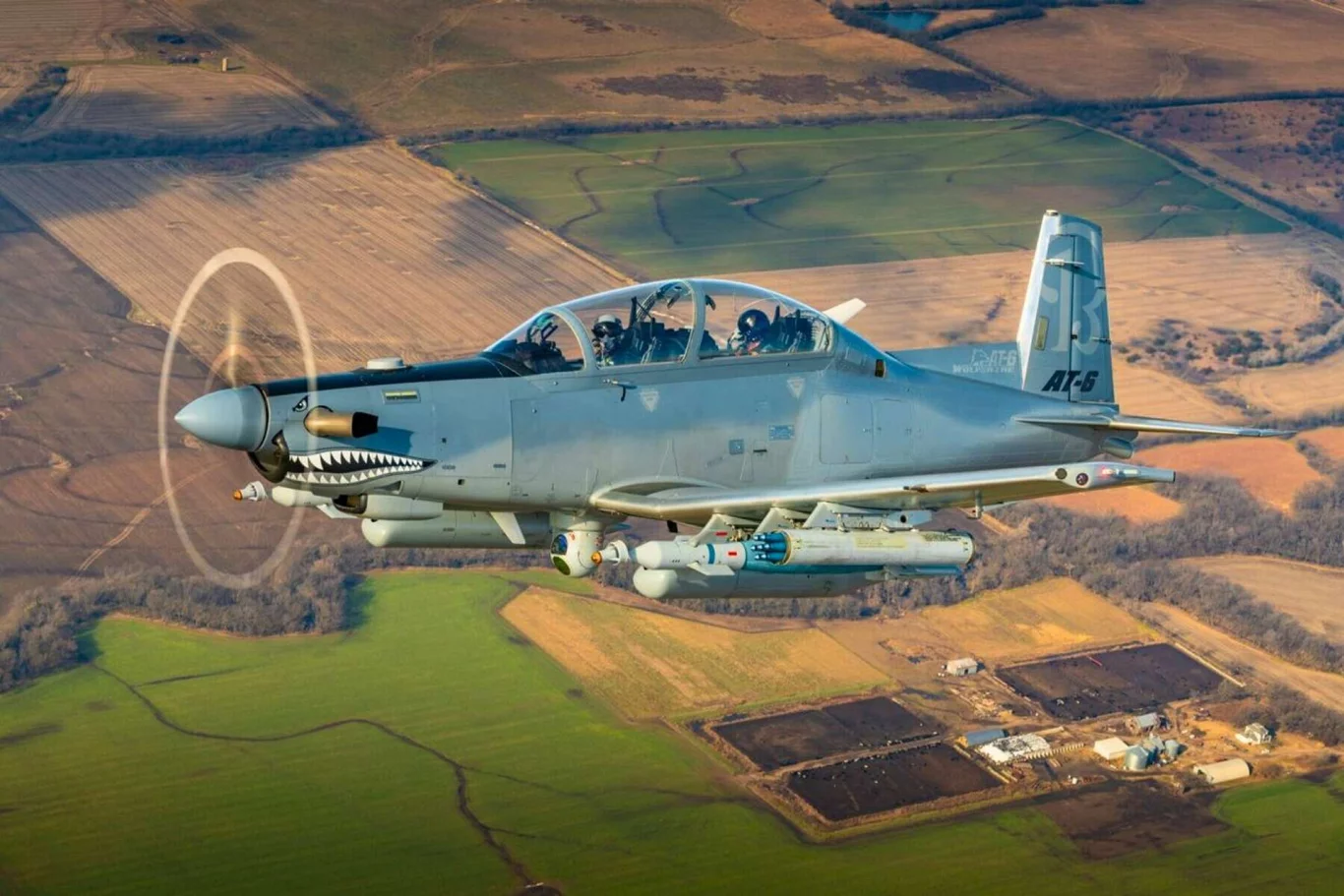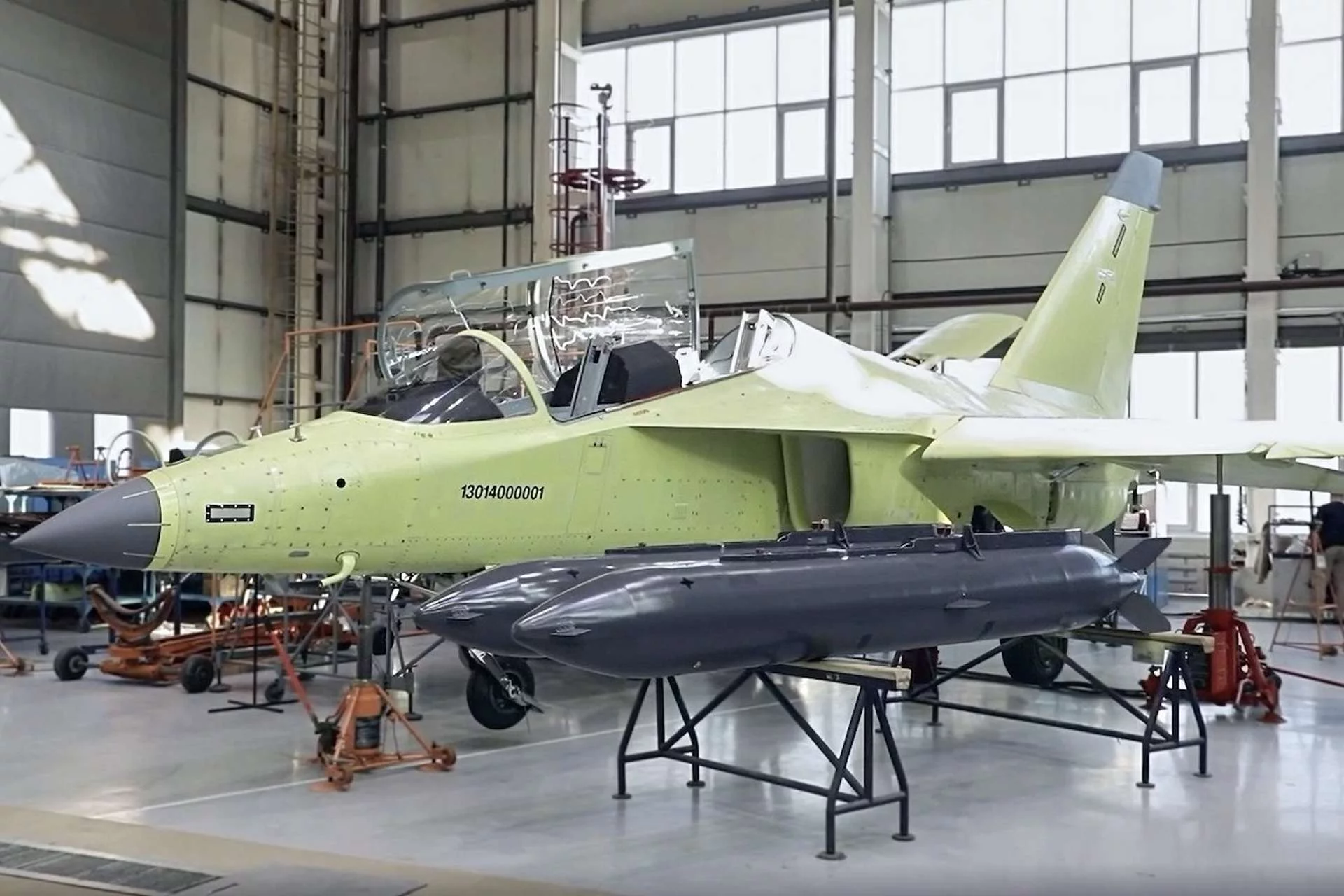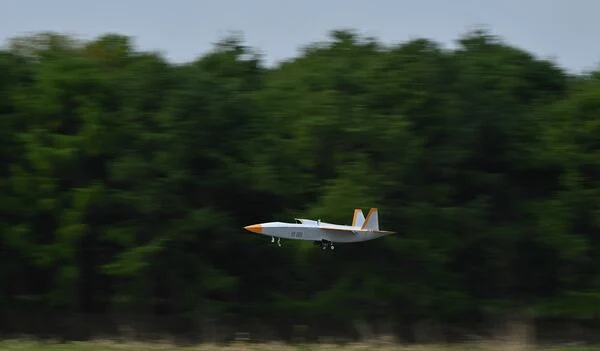In an increasingly complex and fiscally constrained global defense environment, Textron Aviation Defense is aggressively championing its AT-6 Wolverine light attack aircraft as a highly versatile and cost-effective solution for a range of critical missions. Far from being a niche platform, Textron is pitching the AT-6 as a truly modular aircraft, uniquely suited not only for its traditional close air support (CAS) role but also for the burgeoning and vital mission of counter-unmanned aerial systems (C-UAS) and broader intelligence, surveillance, and reconnaissance (ISR) tasks. This strategic positioning aims to highlight the Wolverine’s adaptability and affordability as key selling points for both domestic and international customers grappling with evolving threats.
The AT-6 Wolverine, derived from the highly successful T-6 Texan II turboprop trainer, embodies a philosophy of robust, flexible, and economical air power. In an era dominated by high-cost, high-tech stealth fighters, there’s a growing recognition of the need for platforms that can deliver precision effects without breaking the bank, especially in asymmetric warfare scenarios and for lower-intensity conflicts. The Wolverine fills this gap perfectly, offering sophisticated capabilities within a manageable operational footprint.
Modular Design: The Heart of Versatility
The core of Textron’s pitch revolves around the AT-6’s inherent modularity. This design principle allows the aircraft to be rapidly reconfigured with different sensor pods, weapon systems, and mission equipment to suit specific operational requirements.
- Sensor Integration: The AT-6 can carry a variety of advanced ISR pods, including electro-optical/infrared (EO/IR) cameras, laser designators, and even small synthetic aperture radars (SAR). This transforms it into a highly effective platform for persistent surveillance, target identification, and battle damage assessment.
- Weapon Flexibility: With multiple hardpoints, the Wolverine can carry a diverse arsenal, from precision-guided munitions (PGMs) like Hellfire missiles and guided bombs to rockets, gun pods, and specialized counter-UAS effectors. This flexibility ensures it can engage a wide spectrum of threats.
- Communications Suites: Easily upgradable communication systems ensure seamless connectivity with ground forces and other air assets, vital for coordinated operations.
Counter-UAS (C-UAS) Role: A Growing Imperative
The proliferation of affordable, off-the-shelf drones, some of which can be weaponized, presents a significant and growing threat to military forces and critical infrastructure worldwide. Traditional air defense systems are often too costly or slow to effectively counter these small, low-flying threats. This is where the AT-6 Wolverine shines.
- Persistence: Its long endurance allows it to loiter over vulnerable areas for extended periods, providing a persistent watch against incoming drones.
- Cost-Effectiveness: Operating a turboprop aircraft like the AT-6 is significantly cheaper than flying a jet fighter, making it an economically viable solution for continuous C-UAS patrols.
- Sensor Integration: With its advanced EO/IR sensors, the AT-6 can detect and track even small drones, day or night.
- Scalable Engagement: It can be equipped with various effectors, from traditional machine guns (for kinetic defeat) to potentially more advanced, non-kinetic C-UAS systems, offering a scalable response depending on the threat.
Close Air Support (CAS) Excellence: A Proven Heritage
While C-UAS is a newer mission, CAS is where the AT-6’s lineage truly comes into its own. Derived from a trainer, it offers excellent visibility from the cockpit, superb maneuverability at low speeds and altitudes, and the ability to precisely deliver munitions in close proximity to friendly forces.
- Accuracy: Its stable platform and integrated targeting systems ensure pinpoint accuracy for precision-guided munitions, minimizing collateral damage.
- Pilot Workflow: The Wolverine’s cockpit is designed for ease of use, reducing pilot workload and allowing greater focus on the tactical situation during demanding CAS missions.
- Loiter Time: Its fuel efficiency translates to longer loiter times over the battlefield, meaning it can remain on station longer to support ground troops.
- Operating in Permissive Environments: In areas where advanced air defenses are not a primary threat, the AT-6 provides a highly capable and affordable alternative to high-performance jets for supporting ground operations.
Textron’s strategic push for the AT-6 as a modular platform comes at a time when many air forces are seeking to optimize their resources. Instead of acquiring specialized aircraft for each emerging threat, the concept of a single, adaptable platform that can switch roles with minimal downtime and cost is highly attractive. This versatility makes the AT-6 particularly appealing to nations with smaller defense budgets or those requiring flexible solutions for irregular warfare, border patrol, and counter-insurgency operations. The Wolverine represents a smart investment in adaptable air power, capable of meeting the diverse and evolving demands of the modern battlespace.




